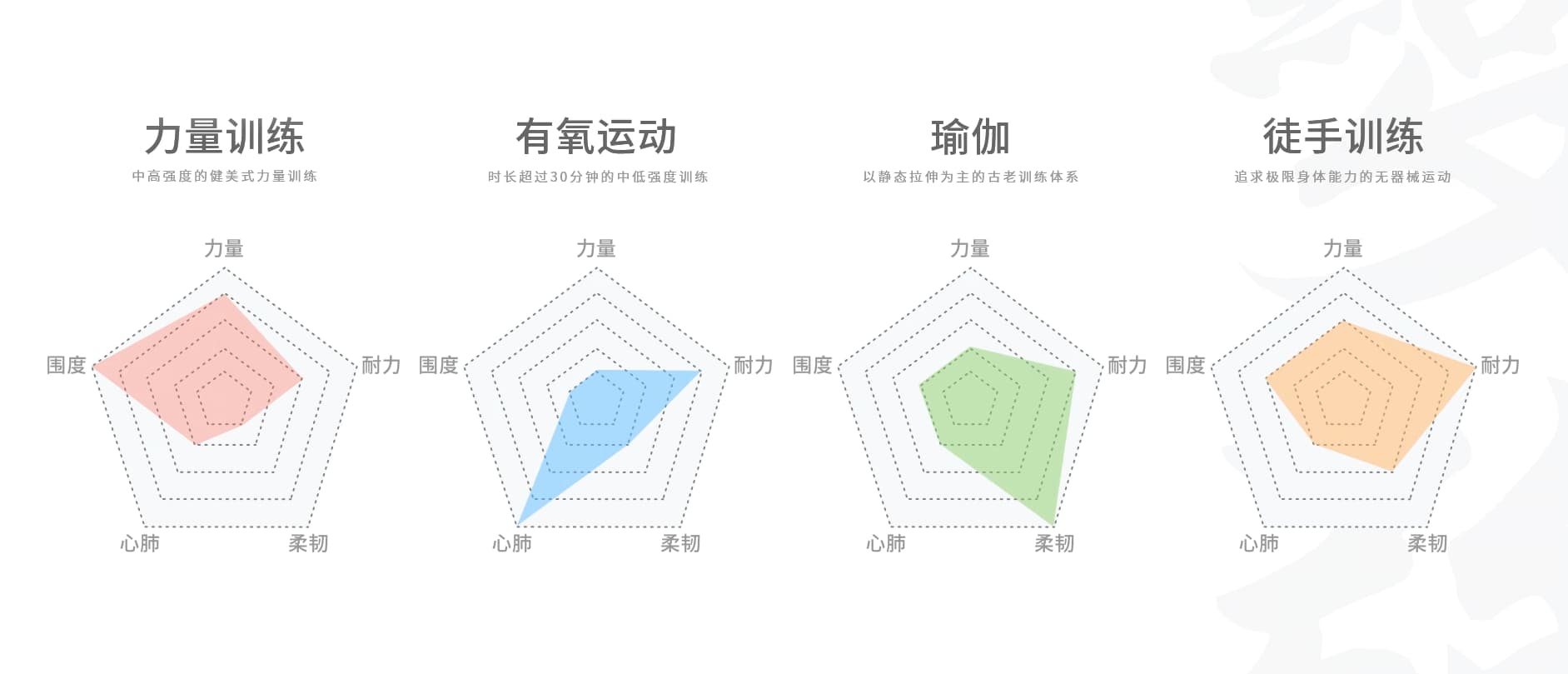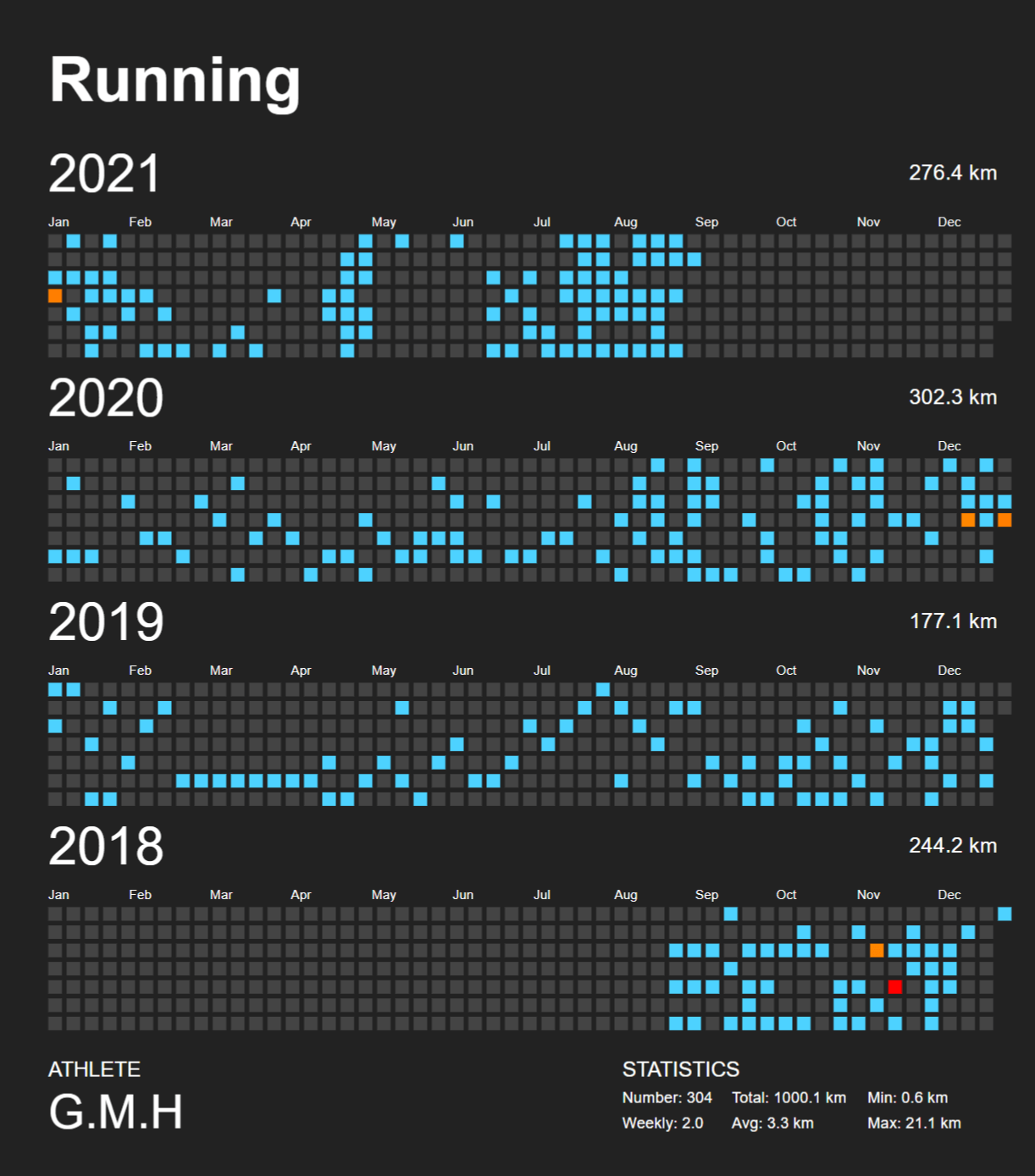[1] ◎ 锻炼方式效果对比
◎ 锻炼方式效果对比
如果你是年轻人,而且时间精力有限,只能从以上四种锻炼方式选两种,你会选哪两个?
我的选择是「力量训练+有氧运动」。
首先,为了尽量全面发展,应该选择有氧+无氧的组合。
其次,力量训练和徒手训练都属于无氧训练,但力量训练相比徒手训练,在训练强度上能更好地实现负荷渐进,强度足够大,效率高,而徒手训练在训练强度上很容易达到天花板;有氧运动与瑜伽都属于有氧训练,但瑜伽相比普遍的有氧运动强度太低,主攻柔韧性,对心肺能力的提升非常有限。
最后,在雷达图上,「力量训练+有氧运动」恰好是两个强度大训练效果好但“偏科”的锻炼方式的组合,能实现非常大的「效果面积」。
什么?这样柔韧度的提升非常有限?
放弃柔韧度,就能获得单位时间最大的力量、围度、心肺、耐力的提升。放弃能产生力量。如果一天有2小时的锻炼时间,若无其他必要,应该全用在「力量训练+有氧运动」上。
实际上,在科学性上这方面最具权威的指南之一的《美国居民身体活动指南》,对18-64岁的人给出的运动建议如下:
- All adults should avoid inactivity. Some physical activity is better than none, and adults who participate in any amount of physical activity gain some health benefits.
- For substantial health benefits, adults should do at least 150 minutes (2 hours and 30 minutes) a week of moderate-intensity, or 75 minutes (1 hour and 15 minutes) a week of vigorous-intensity aerobic physical activity, or an equivalent combination of moderate- and vigorous-intensity aerobic activity. Aerobic activity should be performed in episodes of at least 10 minutes, and preferably, it should be spread throughout the week.
- For additional and more extensive health benefits, adults should increase their aerobic physical activity to 300 minutes (5 hours) a week of moderate-intensity, or 150 minutes a week of vigorous-intensity aerobic physical activity, or an equivalent combination of moderate- and vigorous-intensity activity. Additional health benefits are gained by engaging in physical activity beyond this amount.
- Adults should also include muscle-strengthening activities that involve all major muscle groups on 2 or more days a week.[2][3]
推荐的正好也是中等或高强度的有氧运动和力量训练的组合,看来「力量训练+有氧运动」的意义很大,受此启发,我用 Echarts 做了一个日历热力图,将力量训练和有氧运动的记录同时可视化出来,给自己些仪式感。「力量训练+有氧运动」,如此美妙的组合,人生值得拥有。
之前还用APP记录了跑步三年(2018.08.26-2021.08.27),正好1000km。
